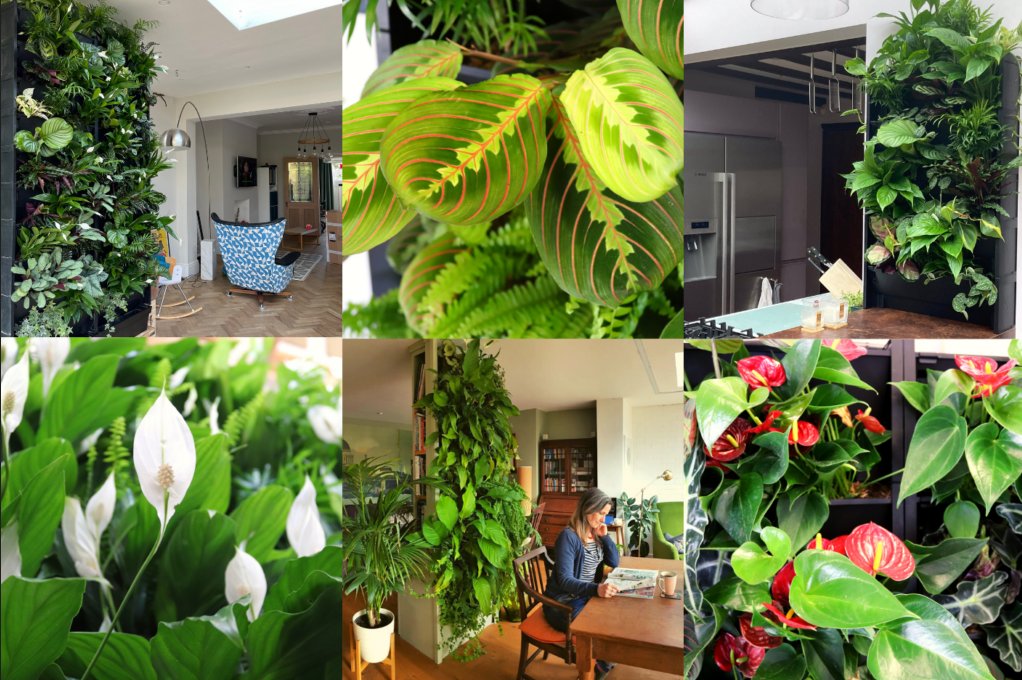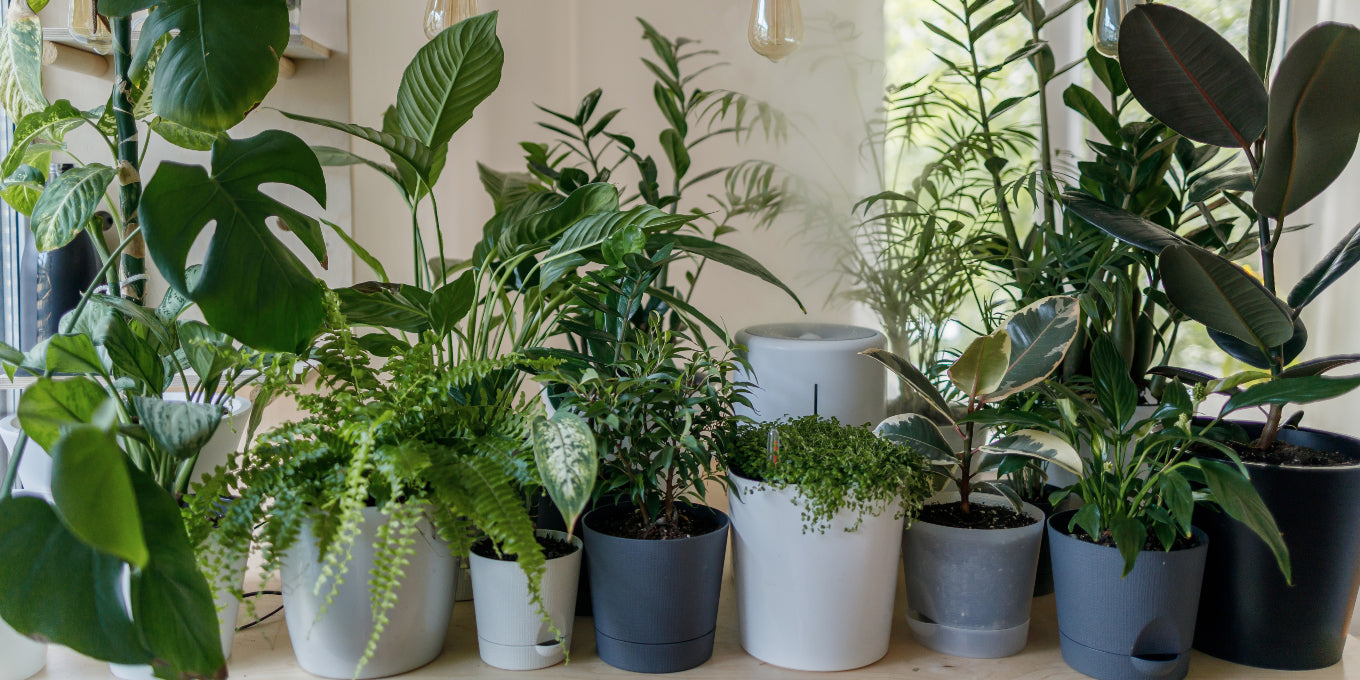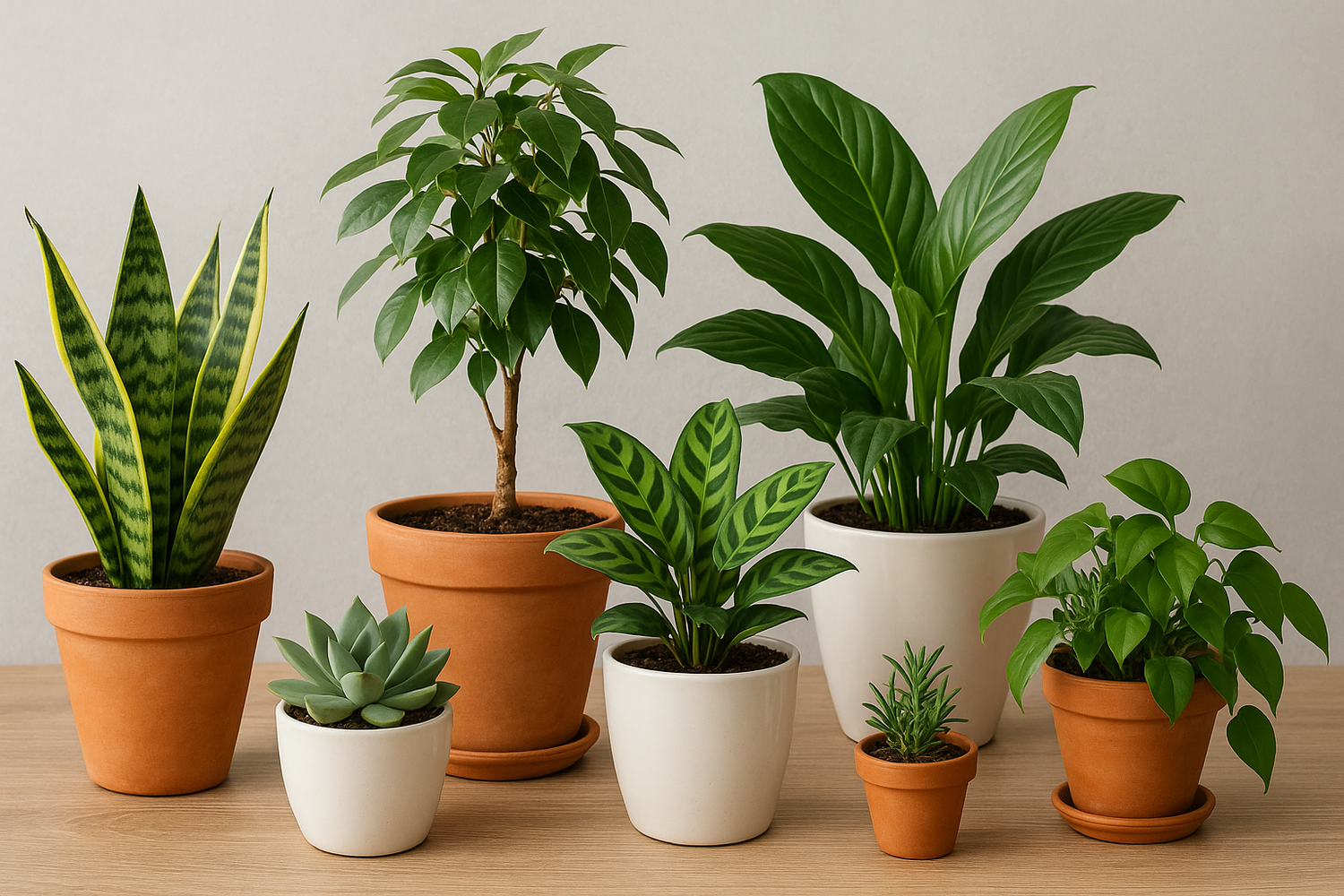Proper watering is key to maintaining healthy indoor plants. Overwatering or underwatering can cause a range of problems, including root rot, wilting, and yellowing leaves. To help your plants thrive, it's essential to understand their specific water needs. In this guide, we’ll walk you through tips and tricks for watering indoor plants the right way.
Why Proper Watering is Crucial
Watering is one of the most important aspects of plant care. When you water correctly, your plants will grow stronger, greener, and more resilient. Proper watering helps:
-
Maintain Optimal Growth: Plants need water to carry out essential processes like nutrient absorption and photosynthesis.
-
Prevent Root Rot: Overwatering is a common cause of root rot, which can kill your plants if not addressed.
-
Ensure Balanced Moisture: Consistent moisture levels help plants maintain their natural structure and vigor.
Signs of Overwatering and Underwatering
Before we dive into how to water correctly, it’s essential to know the signs of overwatering and underwatering:
-
Overwatering Signs: Yellowing leaves, mushy stems, moldy soil, or wilting despite wet soil are indicators of overwatering.
-
Underwatering Signs: Dry, brittle leaves, brown tips, and soil that pulls away from the edges of the pot usually point to underwatering.
Key Tips for Watering Indoor Plants
Here are some practical tips to ensure your plants are watered correctly:
1. Check Soil Moisture Regularly
One of the easiest ways to avoid over or underwatering is to check the soil moisture regularly. Stick your finger about an inch into the soil; if it feels dry, it’s time to water. If it still feels moist, wait another day or two. Some plants, like succulents, prefer to dry out between waterings, while others, like ferns, require more consistent moisture.
2. Water Thoroughly, But Not Too Frequently
When you do water, ensure that the water penetrates the entire root ball. Watering until you see liquid start to drain from the bottom of the pot ensures that the entire root system gets hydrated. However, avoid watering too frequently. Let the soil dry out between waterings to prevent waterlogging, which can lead to root rot.
3. Use the Right Type of Water
The water quality can impact plant health. While tap water is often fine, some plants, like those sensitive to salt build-up, may prefer distilled or rainwater. If you use tap water, allow it to sit for 24 hours to let chlorine evaporate before using it on your plants. Also, avoid hard water, as it can build up salts in the soil over time.
4. Consider the Pot’s Material and Size
The type and size of the pot you use can affect how quickly the soil dries out. For instance, terracotta pots are porous, meaning they allow moisture to evaporate more quickly than plastic or ceramic pots. If you’re using a larger pot, it might hold moisture longer, so adjust your watering schedule accordingly.
5. Watering Frequency Depends on the Season
Indoor plants’ watering needs fluctuate with the seasons. During the growing season (spring and summer), plants generally require more water due to increased activity. In fall and winter, many plants enter a dormant phase and need less frequent watering. Keep an eye on environmental factors like light levels and indoor humidity, which can also influence water evaporation.
6. Water in the Morning
The best time to water your plants is in the morning. This allows the plant to absorb water throughout the day and prevents the risk of mold or mildew growth, which can occur if water sits in the soil overnight. Morning watering also helps the plant acclimate to the temperature change and supports the photosynthesis process.
7. Use a Watering Can with a Narrow Spout
A watering can with a narrow spout helps you control the flow of water and target the base of the plant, avoiding wetting the foliage. Wet leaves can lead to fungal diseases, so always direct the water at the soil level.
8. Adjust for Humidity Levels
Indoor humidity plays a significant role in how often you should water your plants. Plants in dry environments (like those near heaters or air conditioners) may require more frequent watering. Conversely, plants in more humid areas (like bathrooms or kitchens) tend to retain moisture longer and may need less frequent watering.
9. Use a Saucer for Excess Water
If your pots don’t have built-in trays, consider placing them on a saucer to catch excess water. This helps prevent water from pooling around the plant’s base, which can lead to root rot. Make sure to empty the saucer after watering to avoid stagnant water that could attract pests or cause mold.
10. Group Plants with Similar Watering Needs
To simplify your watering routine, group plants that have similar water requirements together. For example, cacti and succulents thrive on minimal watering, while tropical plants like peace lilies prefer more frequent moisture. By keeping plants with similar needs in the same area, you can streamline your care and reduce the chances of overwatering or underwatering.
Understanding Different Plant Needs
Different plants have different water needs, and understanding these needs is essential for their survival. Some plants, like succulents and cacti, are adapted to dry conditions and require minimal watering. On the other hand, tropical plants such as ferns and peace lilies thrive in consistently moist soil.
Final Thoughts: Watering Made Simple
Watering indoor plants the right way can seem tricky at first, but with a little practice, it becomes second nature. The key is to observe your plants and adjust your watering routine according to their specific needs. Keep an eye on the soil, check for signs of overwatering or underwatering, and adjust the frequency of watering based on the season and environmental conditions. By following these tips and tricks, you’ll ensure your indoor plants stay healthy and vibrant, creating a lush, green oasis in your home.





